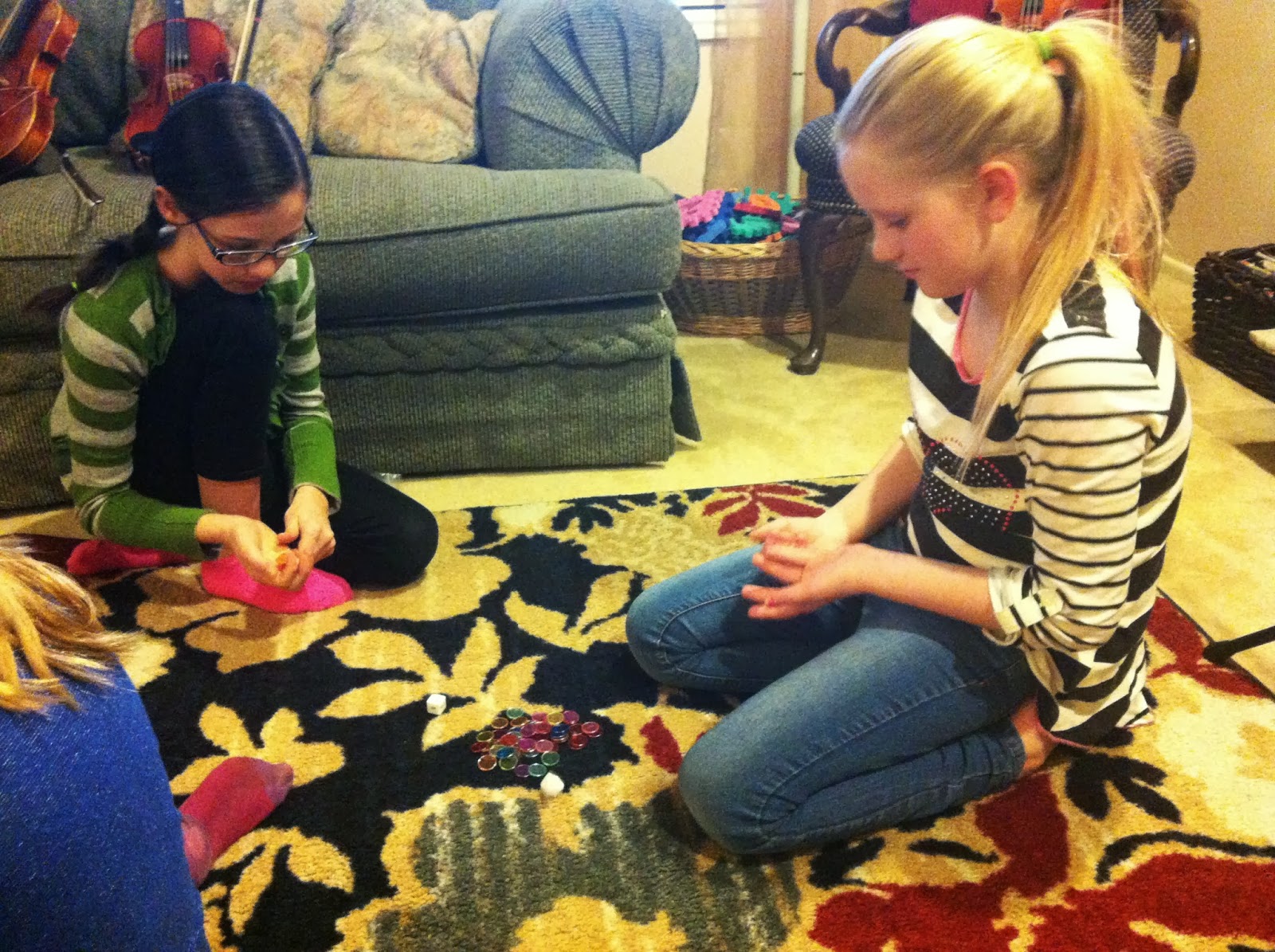This week I've been sick. Moms aren't supposed to get sick. It makes mom-hood really hard. All was bearable until I had to teach lessons this week on top of everything else. After smiling and acting happy through my morning lessons I threw in the towel and canceled all my afternoon lessons, took a hot bath, took a long nap, and then just sat at my computer and vegged until my husband got home and cooked me dinner. With all of this spare time on my computer, I was able to tinker with some games I've had in the back of my mind for a while now.
I should come up with a good name for this game, but I don't have one. Basically, I used 4 two-eighth-note dice and my daughter and I took turns rolling rhythms. We'd count up the number of beats, clap and count, and then move our game piece that many counts. She loved it! It wasn't very hard for her, but it gave her good practice clapping and counting the various rhythms.
 |
| Roll the dice |
 |
| Count the number of beats |
 |
| Clap the rhythm |
 |
| Move the game piece the number of squares as the number of beats in the rhythm rolled. |
 I used the two-eighth-note dice because nothing is less than one beat so the rhythms don't get too complicated (and it's easier to move the game pieces.) Sometimes if we had a nice round number like 8 or 9 or 12 beats, we'd break it up into measures so she could count 1-2-3-4 or 1-2-3. Otherwise, it would just be the number of beats of the note (4 for whole, 3 for dotted half, etc.) Since the game board was pretty long (192 squares is what my daughter counted - I haven't verified) the game took over 15 minutes. So, I made two smaller boards for younger kids, or if you wanted a shorter game.
I used the two-eighth-note dice because nothing is less than one beat so the rhythms don't get too complicated (and it's easier to move the game pieces.) Sometimes if we had a nice round number like 8 or 9 or 12 beats, we'd break it up into measures so she could count 1-2-3-4 or 1-2-3. Otherwise, it would just be the number of beats of the note (4 for whole, 3 for dotted half, etc.) Since the game board was pretty long (192 squares is what my daughter counted - I haven't verified) the game took over 15 minutes. So, I made two smaller boards for younger kids, or if you wanted a shorter game.I love these game boards. I definitely think I will laminate these ones to have on hand. Not only are they good for this particular game, but I was thinking that I could use them to help guide the practice. For instance, my daughter could roll a die (a 24 or 30-sided dice would be great for the long board) and whatever they land on is what they play. We'd determine what the different symbols would mean before playing the game. One idea would be the heart would be her choice, the star would be my choice, and the note would be note reading. You could make up your own rules. That's the great thing about this chart. There are no set rules - just make them up to suit your individual needs.
By the way - the long chart has pretty small squares. We were using my gorilla erasers for game pieces. I was thinking a small die would also work. It would be hard to use anything much bigger than a centimeter. Keep that in mind when planning this game for your kids!
I'd love to hear if you have any other ideas for this game board!












